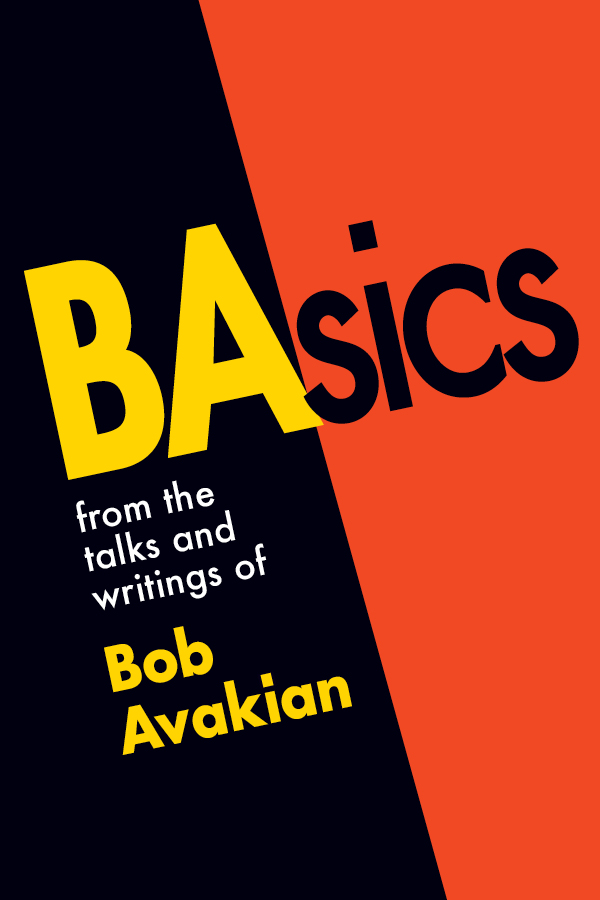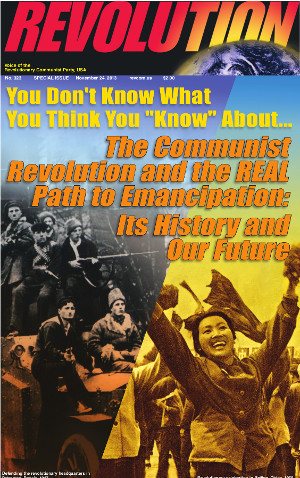![]()
Prison Rape: A Human Rights Crisis in the USA
by Li Onesto | May 25, 2015 | Revolution Newspaper | revcom.us
Rape is about power and control. It’s about humiliation and degradation. It’s the use of force to brutally violate a person’s body.
Rape is one particularly horrific abuse of prisoners. This is done by prison guards, particularly in women’s prisons, and also carried out by inmates against other inmates.
In men’s prisons, rape is a concentrated expression of the predatory and patriarchal mentality men are indoctrinated in by this society—in a situation where there are no women to dominate. Prison authorities use rape as a tool of punishment and control. In prison, authorities allow and create conditions where rape among inmates is widespread. And prison guards who rape and sexually assault prisoners in men’s and women’s prisons are hardly ever punished.
The U.S. government incarcerates millions of people, the majority Black and Latino, calling them the “worst of the worst,” and treats them like sub-humans with no human rights; subjects them to conditions of solitary confinement that amount to torture; denies them the most basic medical care. Prison rape, allowed and carried out by prison staff, is part of all this.
Dr. James Gilligan, who was on the faculty at the Harvard University School of Medicine for many years and is now on the faculty at the New York University School of Medicine, has talked about how rape in prison is a domination tactic, with corrections officers groomed to look the other way: “While the predators—the more violent, powerful inmates—are in effect being given a bribe or a reward to cooperate with the prison authorities, as long as they cooperate, the prison authorities will permit them to have their victims.” (2013 ABC news interview)
In 2010, at least 140,000 inmates had been raped while incarcerated. (Human Rights Watch)
In 2011, nearly 200,000 people were sexually abused in U.S. detention facilities. (Bureau of Justice Statistics)
The widespread rape in U.S. prisons inflicts severe physical and emotional pain and trauma on the vulnerable young men who are its victims, just as it does to women. It carries great risk of infecting victims with HIV/AIDS. In popular culture, prison rape is usually depicted as a product of a prison population of predators and psychopaths, carried out despite the best efforts of authorities to stop it. But in fact MOST of those committing these crimes against prisoners are corrections staff, not inmates. With over two million people behind bars in the U.S. (overwhelmingly men) this amounts to one in 10 being sexually abused while in prison. (“Shame of Our Prisons: New Evidence,” New Yorker, October 24, 2013)
Rape as Torture
The human rights organization Stop Prisoner Rape argues that the sexual assault of prisoners by corrections officials or other inmates amounts to torture under international law. Their fact sheet points out that:
1. Victims of prisoner rape are left beaten, bloodied, and in some cases dead. Many contract sexually transmitted diseases, including HIV/AIDS, syphilis, and hepatitis C. The long-term psychological harm is equally devastating, and may include post-traumatic stress disorder, depression, substance abuse, learned violent behavior, and suicide.
2. ...Prisoner rape has been used in some cases as a tool to punish inmates for misbehavior. Male inmates have testified that they were forced into cells with known sexual predators as a form of punishment for unrelated misconduct. Prisoner rape is also discriminatory; marginalized populations such as gay and transgender inmates are disproportionately targeted for abuse.
3. ...It is common for corrections officials to participate in or acquiesce to the sexual abuse of detainees. In some cases, corrections staff have set up inmate-on-inmate rape by intentionally housing vulnerable inmates with known predators.... The failure of corrections officials to take appropriate steps to prevent and address prisoner rape may amount to state acquiescence. (SPR Fact Sheet: Prison Rape is Torture, October 2007)
Serial Rape in Women’s Prisons
In 2014, a horrific situation at the Tutwiler Prison for Women in Wetumpka, Alabama, came to light. An investigation by the Department of Justice (DOJ) found that women inmates had been repeatedly raped by prison guards. At least 36 of the 99 employees had had sex with prisoners—about 36 percent of the staff. DNA tests confirmed that some officers were the fathers of some of the inmates’ children. Women had been told that if they wanted to get needed items like tampons and toilet paper, they had to agree to perform some kind of sexual service. The DOJ report said: “Tutwiler has a history of unabated staff-on-prisoner sexual abuse and harassment. The women at Tutwiler universally fear for their safety. They live in a sexualized environment with repeated and open sexual behavior, including: abusive sexual contact between staff and prisoners; sexualized activity, including a strip show condoned by staff; profane and unprofessional sexualized language and harassment; and deliberate cross-gender viewing of prisoners showering, urinating, and defecating.”
Prison officials knew all these crimes were happening and, as a policy, women who complained about this abuse or tried to make legal claims were routinely and severely punished. (See “The Crimes Against Women at Tutwiler Prison.”)
This kind of horror for women prisoners is happening in other prisons as well.
On May 22, a class action suit was filed, detailing reports of serial rape and sexual abuse by male corrections officers at the all-female Rose M. Singer Center in the Rikers Island jail in New York City. The lawsuit alleges that rape is “endemic” in the Singer Center and that “This abuse is only possible because, in the face of repeated warnings, the City of New York has enabled a culture of complacency to perpetuate at Rikers Island and thereby consented to the abuse of women in its custody.”
Two (unnamed) women are suing a corrections officer, Benny Santiago, and the city of New York. The women say they were raped repeatedly by the officer with the complacency and consent of the city. The suit details reports of serial rape and sexual abuse by eight corrections officers, including one instance where an inmate was dragged into a janitor’s closet and another where the inmate became pregnant. The lawsuit says: “These officers’ conduct was open and notorious. On at least one occasion, women in custody overheard a correction officer raping a woman in her cell. Another correction officer routinely raped women in the officers’ station.” One woman who is still incarcerated says she was raped more than four times a week by Santiago and that he “implicitly threatened” her family in an effort to keep her quiet.
Transgender Prison Population
Gay, lesbian, and transgender prisoners are particularly vulnerable to sexual assault in prison. The most recent national inmate survey by the Justice Department found that sexual victimization was reported by 3.1 percent of heterosexual prisoners, 14 percent of gay, lesbian, and bisexual prisoners and 40 percent of transgender inmates.
A 2009 study of sexual assault in California state prisons found that trans inmates are 13 times more likely to be sexually assaulted than other prisoners. In California, as many as 50 percent of trans people in detention facilities report being raped while incarcerated. (“Protecting Trans Prisoners,” Slate, January 6, 2015)
Immigration and Indian Reservation Detention Centers
In 2013, the government released a report based on surveys carried out between February 2011 and May 2012 at hundreds of state and federal prisons and county jails, and 15 special confinement facilities. (New York Times editorial, May 25, 2013)
The study found that some institutions had rates of sexual abuse at least twice the national average. More than 40 prisons and local jails were cited in addition to two military facilities and a jail on the Pine Ridge Indian Reservation in South Dakota.
Over the last 20 years, there are documented widespread reports of sexual abuse in immigration facilities. A letter from Human Rights Watch to Obama stated: “A 2010 Human Rights Watch report compiled incidents and allegations of assaults, abuses, and episodes of harassment in the national immigration detention system—including the assaults of five women detained at the Port Isabel Service Processing Center in Texas in 2008 when a guard entered each of their rooms in the infirmary, told them that he was operating under physician instructions, ordered them to undress, and touched intimate parts of their bodies. In 2009 the Women’s Refugee Commission released a report that documented incidents of sexual and physical abuse of unaccompanied children in immigration custody, including the repeated sexual assaults of children at the Away From Home Texas Sheltered Care Facility in Nixon, Texas.”(Human Rights Watch, February 11, 2015, Letter to Obama)
The detention facility on the Pine Ridge Indian Reservation in South Dakota, the Oglala Sioux Tribal Offenders Facility, houses both men and women and is the most crowded Indian Country jail in the nation. The almost 11 percent rate of reported sexual abuse by staff members here was higher than any other adult facility covered by the study. A New York Review of Books article noted that “Although the Bureau of Indian Affairs runs many jails in Indian Country, it does not run this one. But the Oglala Sioux jail shares important characteristics (albeit in extreme form) with ones the BIA does operate, and anecdotal evidence suggests that rape is widespread in these federally run facilities as well.” (“The Shame of Our Prisons: New Evidence,” October 24, 2013)
Juveniles and Rape
Incarcerated youth are frequently, and often repeatedly, raped in juvenile detention centers throughout the country. A 2010 Department of Justice report found that over 12 percent of all youths held in juvenile detention reported sexual violence. The youth were most often victimized by staff and counselors and 20 percent said they were assaulted more than 10 times. Over 8,500 males and females under 18-years-old were surveyed and 1,720 reported that they had been sexually assaulted. (Salon, June 6, 2013)
*****
In 2003, Congress passed the Prison Rape Elimination Act (PREA) and President George W. Bush signed it into law. PREA is supposed to screen and identify possible predators and victims and then come up with procedures to ensure investigation of complaints by outside law enforcement; wardens and guards are to be instructed about sexual abuse; and abusers, whether inmates or guards, are supposed to be punished.
The enormity and horrible dimensions of prison rape are clear. And in the face of this, the government proposes what amounts to reports of wardens professing “zero tolerance” for sexual abuse; anti-rape posters on bulletin boards, hotlines to report sexual abuse, and educational videos for inmates and training sessions for guards.
Meanwhile in the 12 years since PREA was passed, reports of sexual victimization have remained high and the victims of rape and other sexual abuse in prison are still getting no justice. Reports of rape or coercive sex suffered by inmates rose by 11 percent between 2008 and 2011. The American Civil Liberties Union estimates that from 2003 to 2012—nearly two million inmates were sexually assaulted.
PREA is like writing a human rights manual for a plantation owner during slavery.
This system cannot and will not solve the problem of prison rape because it is the result of and is part of the whole way prisons function in the U.S.—which has nothing to do with rehabilitation and everything to do with cruel and vindictive punishment and the social control of huge sections of society, especially Black and Latino youth, who the system has no future for.
Volunteers Needed... for revcom.us and Revolution
If you like this article, subscribe, donate to and sustain Revolution newspaper.






